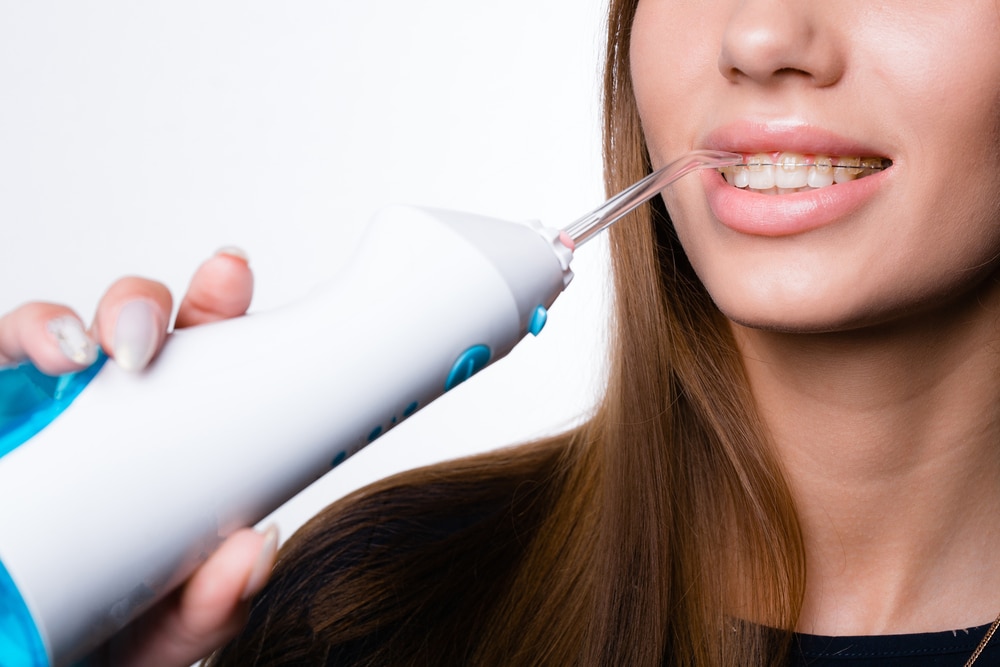Maintaining good oral hygiene is essential for a healthy mouth, but simply brushing your teeth daily isn’t enough. Conventional toothbrushes can only remove up to 40% of the dirt in your mouth, leaving behind harmful bacteria. This is where a dental irrigator comes in handy.
An irrigator is a device that can provide up to 99.9% more effective cleaning, leaving your mouth feeling fresher and cleaner. However, to achieve the best results, it’s essential to use your dental irrigator correctly.
In this guide, we’ll take you through the proper procedure for using a water flosser and everything you need to know about its usage.

Guide to the use of water flossers
Step 1 – Connect or Charge the Irrigator
The first step in using a dental irrigator is to connect it to a power source if you’re using a desktop model. If you’re using a wireless irrigator, it’s best to charge it for about 4-5 hours. If you have a faucet irrigator, there is no need to charge it. You only need to install the filter onto the faucet to connect the tube.
Step 2 – Fill the Reservoir
Fill the reservoir with warm water to avoid discomfort during cleaning. Cold or hot water can cause an unpleasant sensation during the cleaning process.
Step 3 – Choose the Nozzle
There are different types of nozzles available depending on the model. These are:
- Standard: Designed to clean teeth and remove food debris from between teeth.
- Pick Pocket: Used for gum care after a periodontal treatment. It’s designed to reach deeper into the gums, periodontal pockets, or around implants.
- Orthodontic: Designed to clean between metal filaments or brackets of dental appliances due to the filaments at the tip.
- Plaque: Equipped with three soft bristle clusters to gently remove plaque around implants, bridges, or crowns.
- Periodontal: Shoots a jet of water through a rubber tip, which helps clean the affected area while avoiding damage to sensitive areas of the mouth.
- Oxyjet: Exclusive to Oral-B, these nozzles project microbubbles that improve cleaning while reducing discomfort. They can also be used to massage the gums.
- Tongue Cleaner: A flat-shaped nozzle used to eliminate white stains from the tongue, removing toxins and germs.
To install the nozzle, apply slight pressure to the handle until you hear a “click.”
Step 4 – Remove Air from the Tubes
This is an essential step that ensures the irrigator functions correctly. Select the maximum pressure level and press the irrigator button to remove air from the tubes. Otherwise, during the first use, even if you choose the lowest level, the pressure can be too strong.
Step 5 – Position Yourself
Lean over the sink to avoid splashing, and point the irrigator downwards into your mouth.
Step 6 – Choose the Pressure Level
For desktop models, you can select the pressure level by turning a dial. For portable models, you need to press a button to choose between level 1-5.
Step 7 – Choose the Mode of Use
Desktop models have a dial for choosing the mode, while portable models have a separate button (on smaller models, it may be the same button as the power button) to select from three modes.
Step 8 – Turn on the Irrigator
Press the ON button or the power button to turn on the irrigator.

Step 9 – Proper Use of a Water Flosser
Now that you know how to start your water flosser, let’s focus on how to use it correctly. The proper way to use it is by following the gum line.
To do this, direct the jet of water along the line that your gums draw on the tooth. Start at the top of the tooth, then run along the base of the gum and through all the interdental spaces. Ensure that the jet of water comes into contact with each tooth for about 2 seconds.
After finishing the outer part, stop the irrigator and rotate the nozzle to start with the inner part.
Step 10 – Proper Maintenance of Your Water Flosser
Now that you know how to use your oral irrigator, there is one crucial thing that you should never forget: Turn it off and empty the reservoir after each use.
Leaving water in the tank can lead to the generation of germs and toxins, contaminating the container and reducing the effectiveness of the device.
Tips on Proper Usage of a Water Flosser
Using a dental irrigator is quite easy, as you would have noticed in the previous step. However, here are some things to keep in mind:
- The irrigator is not a substitute for a toothbrush: Hence, using an irrigator does not mean you stop brushing your teeth. You should always use it after brushing to make it more effective.
- Never overuse the irrigator: Experts recommend using the irrigator for no more than 5 minutes every 2 hours to avoid damaging your teeth.
- Detecting wounds or canker sores: If you feel you have a wound or canker sore in your mouth or tongue, avoid using the irrigator, as the jet could damage or enlarge the wound.
- Water flosser maintenance: After each use, it is recommended to clean the reservoir to avoid the appearance of bacteria. Clean and store the mouthpiece in its compartment to prevent it from being exposed to the air and becoming contaminated. Some models, such as Waterpik irrigators, have a small compartment in the lid to store the heads and keep them protected.
- Flossing: If you are going to use dental floss, always do it after using the irrigator, so it will be easier to remove food that has been trapped between the teeth.
- Cleaning the water flosser: After using the dental irrigator, you should empty and clean the reservoir. Cleaning the appliance should also be done at least twice a month.